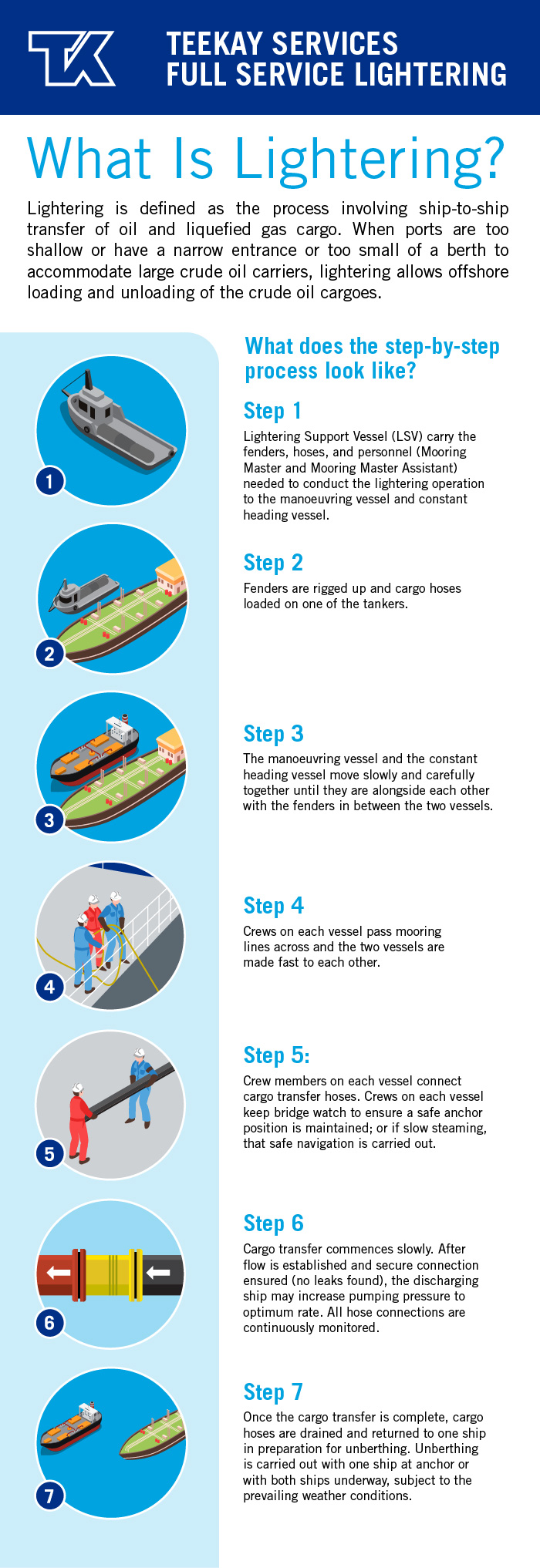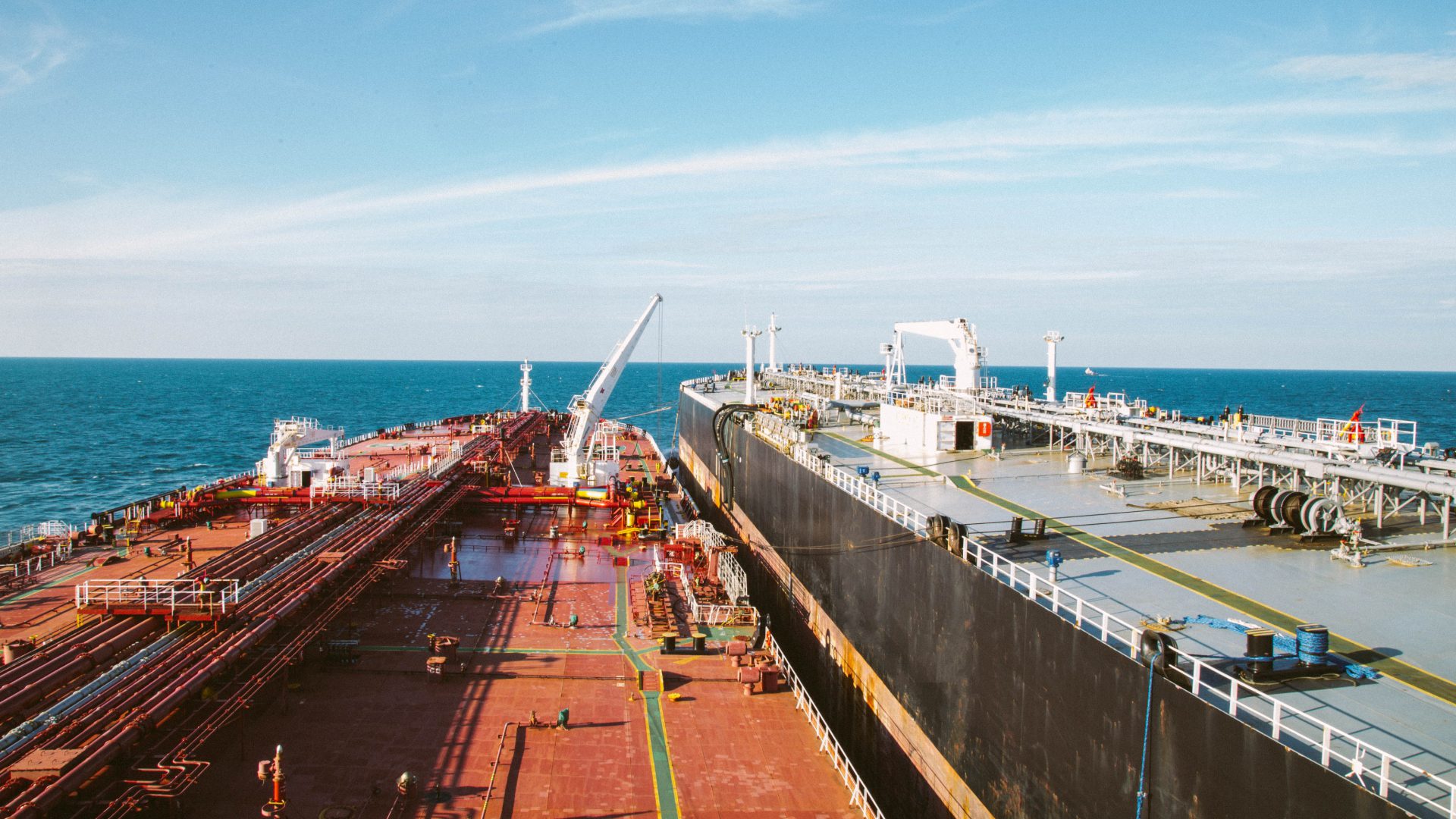17 November 2022
Lightering is defined as the process involving ship-to-ship transfer of oil cargo. This process is used because economical shipment of crude oil to the United States or vice versa, requires the use of extremely large tankers called very large crude carriers (VLCCs) and ultra large crude carriers (ULCCs). In turn, ports may not be deep enough, may have narrow entrances, or may have small berths such that these large tankers cannot be accommodated. Thus, lightering allows very large tankers to unload and load crude oil cargoes offshore.
The lightering process consists of maneuvering a smaller tanker alongside the larger tanker, typically with both vessels underway. The two vessels are moored together with lines while using large rubber bumpers called fenders between the two vessels to prevent contact. Crude oil cargo is transferred through hoses connected between the two vessels. The two vessels may be anchored or may continue underway while the transfer takes place depending upon sea conditions.
Lightering locations are dictated primarily by water depth and traffic. In the Gulf of Mexico, this process takes place twenty (20) to sixty (60) miles from land. Lightering any further offshore would be both time consuming and less convenient.
Check out the infographic for a step-by-step breakdown of the lightering process

